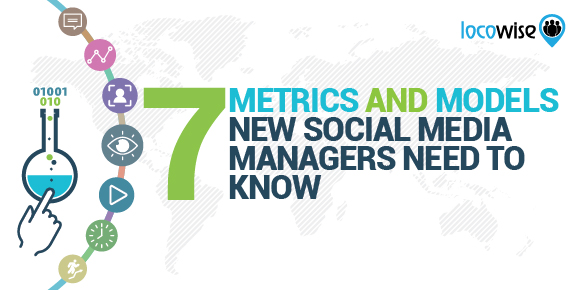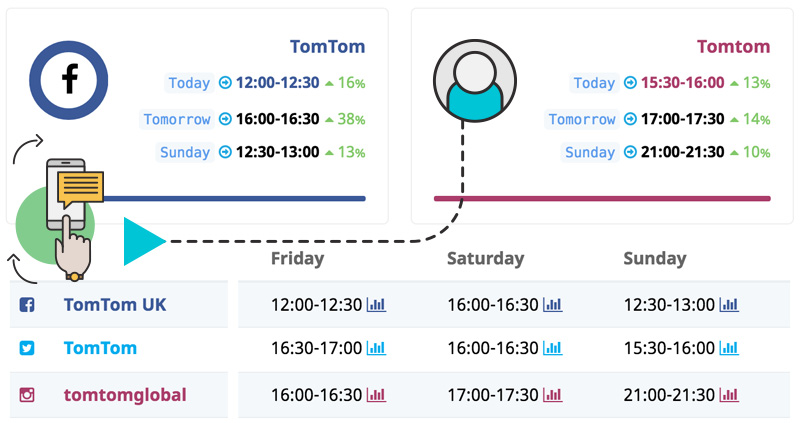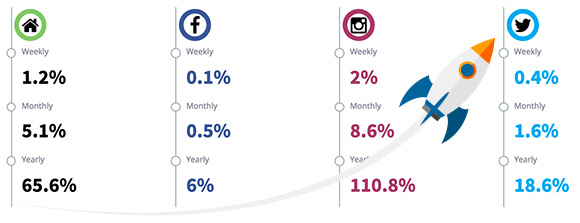7 Metrics and Models New Social Media Managers Need To Know
Sahail Ashraf posted on 22 July 2016
New to social media? No problem. Check out this handy list of social media metrics and definitions. It should help you kickstart your optimisation, publishing and reporting with the help of Locowise version 3.0.
“Great idea, but why are they going to care? What exactly do we want them to do?”
The words of a boss I once worked for still ring true in most of the decisions I make in social media marketing. On the surface, they are simple questions, but as is often the case with campaign planning, it can be easy to forget how the original intent complements the metrics associated with your objective. This subsequently makes post-campaign reporting an unnecessary headache.

Many social media practitioners may obsess mainly over what makes “good content” in order to detract from the answer to the second question. So it’s increasingly important for social media managers to not over-report on metrics that maybe aren’t representative of your target audience or the actual actions you want them to take.
Social media metrics and indicators are often purported to be a minefield, with critics citing a disconnect with other key strands of digital marketing. So we’ve developed this quick summary to help emphasise (or re-emphasise) their importance.
We’ve also chucked in a couple of our predictive models too, so you can confidently communicate to the social media skeptics in your organisation, exactly what kind of path your social channels are on!
1. Engagement
The number of times people engaged with your page by clicking on any of the content. In other words, engagement is defined as the sum of post clicks, likes, shares and comments.
2. Post Engagement Rate
The percentage of people who liked, commented, shared or clicked on your post divided by the post reach. The calculation used is post_engaged_users*100/post_impressions_unique
3. Reach
Reach is defined as the number of people who have seen any content associated with your Page.
Organic Reach: The number of people who visited your Page, or saw your Page or one of its posts in News Feed or Ticker. These impressions can be Fans or non-Fans.
Paid Reach: The number of people who saw a sponsored story or Ad about your Page.
Viral Reach: The number of people who saw your Page or one of its posts from a story published by a friend. These stories include liking your Page, posting to your Page’s Wall, liking, commenting on or sharing one of your Page posts, answering a Question you posted, RSVPing to one of your events, mentioning your Page, phototagging your Page or checking in at your Place.
4. Impressions
The total number of impressions seen of any content associated with your Page.
Organic Impressions: The number of times your posts were seen in News Feed or Ticker or on visits to your Page. These impressions can be Fans or non-Fans.
Viral Impressions: The number of impressions of a story published by a friend about your Page. These stories include liking your Page, posting to your Page’s Wall, liking, commenting on or sharing one of your Page posts, answering a Question you posted, RSVPing to one of your events, mentioning your Page, phototagging your Page or checking in at your Place.
Paid Impressions: The number of impressions of a Sponsored Story or Ad pointing to your Page.
5. Average Video completion
The portion of your video content (as a percentage) that is viewed in an average watch session.
6. Optimal day and time to post model (Locowise Social Scientist)
A robust predictive model providing you with optimal posting timeframes for each day of the week.
These are all underpinned by hundreds of data endpoints relating to thousands of scenarios directly affecting your brand.
These include yours as well as your competitor’s historical performance over the past six weeks.
Other end points include data concerning when fans are online, their respective countries and the average volume of engagement recorded during key posting timeframes.

7. Growth prediction model (Locowise Social Scientist)
A weighted combination of linear and polynomial models, based on your brand and competitor’s historical growth. Locowise allows you to play the long game, by combining insights from big data with intelligence from machine learning to predict how your and your competitor’s profiles are expected to grow individually (for Facebook, Twitter or Instagram for example).
Alternatively, the first column with the green house symbol up top represents all of those profiles combined to form a growth prediction for the brand on social in its entirety. It’s all designed to allow you report preemptively on where brands are headed strategically!





